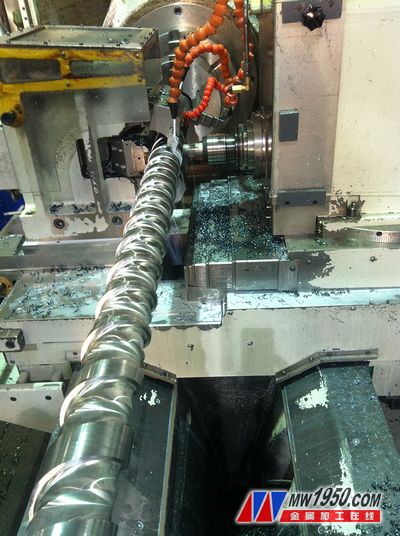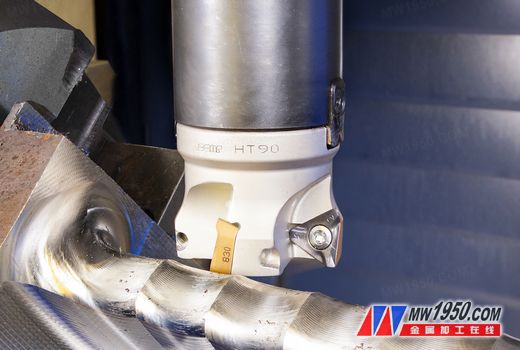For many years, even though CNC machine tools have been widely accepted and used, the development of metal cutting machine tools is still too traditional, and specific machine tools are developed according to their respective functions such as turning, milling and drilling. If the machining center of a rotating tool such as a clamping cutter or a drill bit can be integrated for CNC turning, the downtime can be reduced by reducing the number of times the workpiece is clamped and the number of times it is moved from this machine to another machine . Processing efficiency; this synergistic appeal has led to the transformation of the rotary power head on the traditional CNC lathe, and thus the turning and milling complex machining. Today's modern multi-tasking machines feature a B-axis that allows the tool to rotate and move, advanced control systems and cutting-edge CAM software to complete the main machining tasks in one setup.

Milling processing
Milling machining process, there are two main forms: the contour of the machining tool axis parallel to the workpiece; machining plane perpendicular to the axis of the workpiece and the tool. The contour contour turning and milling combined machining is similar to the machining of the inner and outer contours of the rotating workpiece by means of helical interpolation milling; and the face machining type turning and milling combined machining can only process the outer surface. Although the turning and milling complex machining looks very similar to turning, it is as simple as turning with a rotating milling cutter, but the two machining methods are fundamentally different. The cutting speed of turning and milling combined machining is determined by the speed of the milling cutter; the cutting speed different from turning is defined by the rotational speed of the workpiece. The speed of the workpiece in the turning and milling combined machining is only related to the feed.
The advantages and applications of turning and milling combined machining are as follows:
• First, machining non-continuous surfaces can result in intermittent cutting, such as when machining various tanks and clearing roots. In classic turning operations, this operation can create impact loads that are not conducive to machining, resulting in poor quality of the machined surface and premature wear of the tool . In the turning and milling combined machining, the tool used is a milling cutter, and the milling itself is interrupted cutting during the periodic change of the load.
• When the material to be processed is a long chip material. In turning, chip forming is a difficult task; finding the right chipbreaker for the turning tool is not an easy task. Milling cutters for turning and milling combined machining produce short chips, which significantly improves the control of the chips.
· For example, the crankshaft and the main shaft with the eccentric journal are processed: in the turning process, the eccentric mass of the workpiece such as the crankshaft neck and the eccentric cam can cause the unbalanced force to be generated, which adversely affects the machining; This negative effect is avoided due to the low rotational speed of the workpiece.
* Similarly, look heavy machining workpieces: during turning, cutting speed determined by the workpiece, limited by the spindle drive. When the spindle drive cannot drive the heavy workpiece to the required speed, the cutting speed is much smaller than the theoretical range; and the overall performance of the turning process is lowered. The turning and milling combined machining effectively avoids the above processing difficulties.

Isca milling cutter
Isca's indexable face milling cutters are used for turning and milling combined machining with excellent performance. However, with the turning and milling combined machining method for manufacturing, it is necessary to clarify the relative position of the tool and the workpiece, and correctly select the blade shape and the machining path. For example, the tool position has an effect on the shape error; the blade shape has an effect on the quality of the machined surface. The final workpiece shape is usually obtained with a milling cutter with a wiper blade. The implementation of turning and milling combined machining needs to fully consider the selection of the tool and the determination of the cutting parameters, and it needs to be verified by trial cutting.
The introduction of turn-milling combined machining in manufacturing can solve machining problems and significantly increase production. With the right modern machine tools and the right choice of cutting tools , it has become possible to increase productivity with relatively new machining methods that represent the direction of future machining.
Office Paper Cutter Utility Knife,Hight Quality Utility Knife,Best Utility Knife
Shangqiu Acer Measuring Tool Co.,Ltd. , https://www.acertoolshn.com